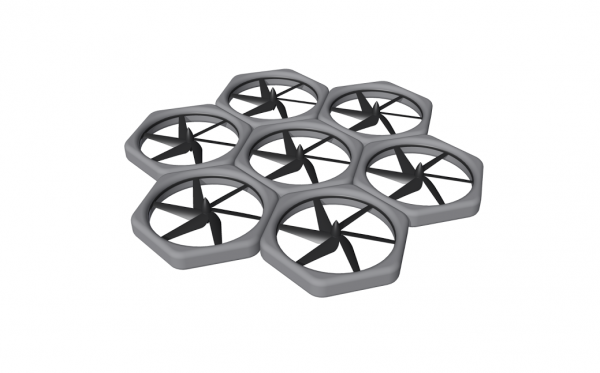BY LETTER
Fan Matrix
Technology > Application > Transportation > Atmospheric Transport
Technology > Technology Type or Material > Drytech/Hylotech
Technology > Technology Levels > Middle Tech / Midtech
Technology > Technology Type or Material > Drytech/Hylotech
Technology > Technology Levels > Middle Tech / Midtech
Mesoscale fan array | |
 Image from Johnny Yesterday | |
| Larger than fancloth rotors, fan matrix motors can deliver higher thrust | |
Fan matrix turbines rarely exceed five meters in diameter, and are typically between 2.5 meters and 10 cm in diameter. Large area fan matrices are connected to their payload by numerous tensile lines. They thus operate in a similar manner to fancloth paracopters.
Fan matrices are similar in form and operation to fancloth, but there are several significant differences between them. Fancloth is flexible, like cloth (hence the name) and requires a support framework or an active stiffening system. Fan matrices on the other hand are inherently stiff on the decimeter or larger scale. Airflow through fancloth is laminar, or close to it. Airflow through fan matrices is turbulent even with the best logarithmic turbine designs. The ratio of thrust-per-unit area is much higher in fan matrices than fancloth. Fancloth is designed to be low-thrust and quiet. Fan matrices are designed to generate high thrust, which must generate significant decibels, and they are usually equipped with acoustic phased-array antisound systems. Fan matrices can be modular; individual fan cells (a coaxial turbine design is required) can fly autonomously and link together in the air with power reactor units to form matrices of the required size for ultra-heavy lifting.
Related Articles
Appears in Topics
Development Notes
Text by Johnny Yesterday
Initially published on 26 January 2016.
Initially published on 26 January 2016.






